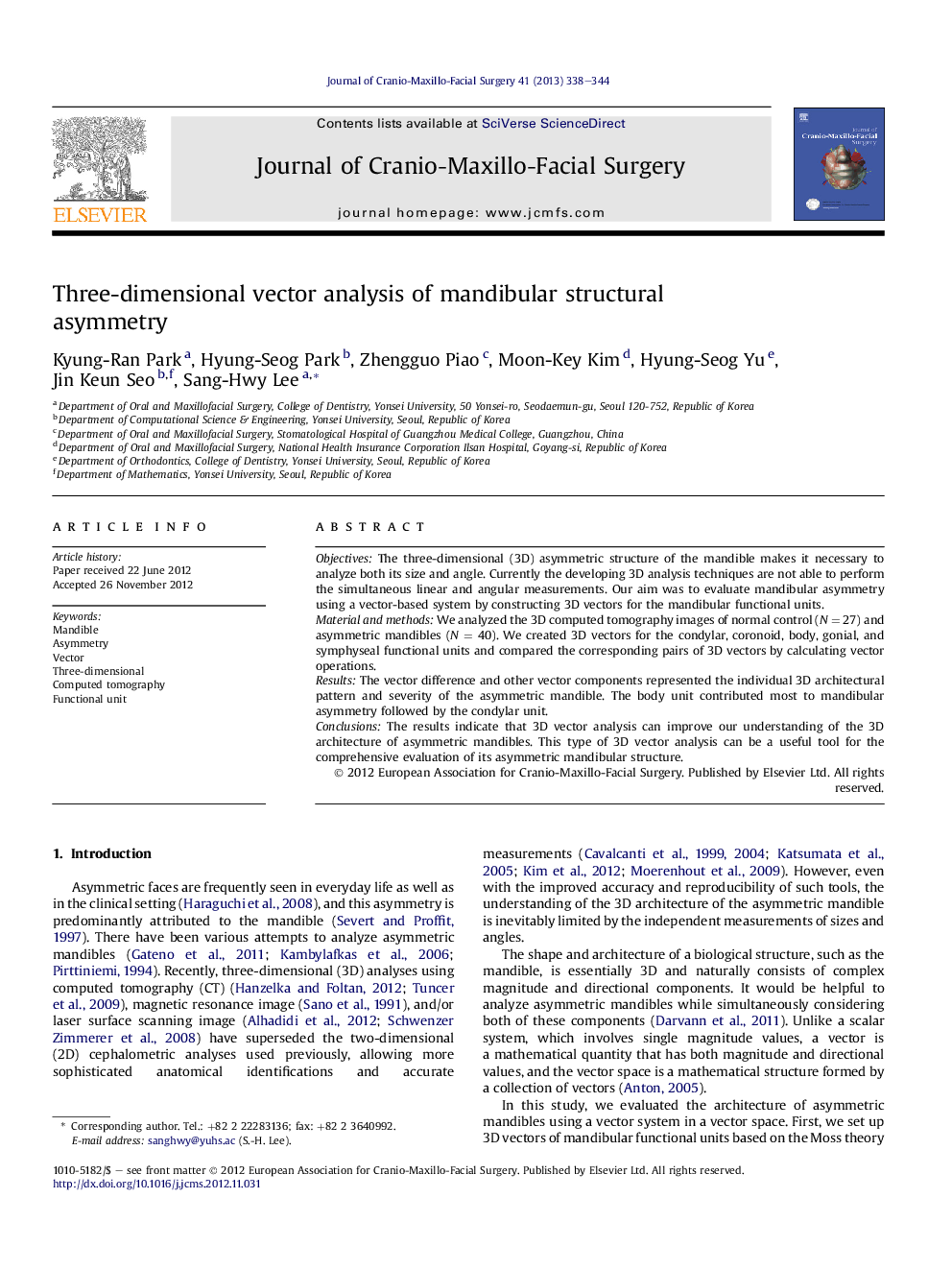| Article ID | Journal | Published Year | Pages | File Type |
|---|---|---|---|---|
| 3143274 | Journal of Cranio-Maxillofacial Surgery | 2013 | 7 Pages |
ObjectivesThe three-dimensional (3D) asymmetric structure of the mandible makes it necessary to analyze both its size and angle. Currently the developing 3D analysis techniques are not able to perform the simultaneous linear and angular measurements. Our aim was to evaluate mandibular asymmetry using a vector-based system by constructing 3D vectors for the mandibular functional units.Material and methodsWe analyzed the 3D computed tomography images of normal control (N = 27) and asymmetric mandibles (N = 40). We created 3D vectors for the condylar, coronoid, body, gonial, and symphyseal functional units and compared the corresponding pairs of 3D vectors by calculating vector operations.ResultsThe vector difference and other vector components represented the individual 3D architectural pattern and severity of the asymmetric mandible. The body unit contributed most to mandibular asymmetry followed by the condylar unit.ConclusionsThe results indicate that 3D vector analysis can improve our understanding of the 3D architecture of asymmetric mandibles. This type of 3D vector analysis can be a useful tool for the comprehensive evaluation of its asymmetric mandibular structure.
